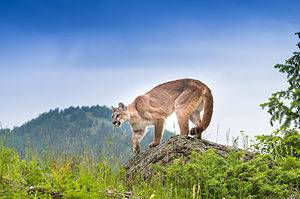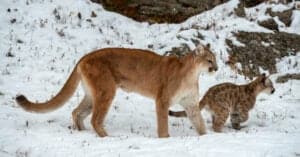Mountain lions (Puma concolor) are incredible creatures, naturally built with the ability to launch themselves off the ground into trees 18 feet tall! Sleek, stealthy, and graceful, these majestic wild cats roam North and South America, silently slinking through forests, swamps, and mountainous habitats undetected. As adults, they capture our imaginations with their skill and grace, but as babies, they are irresistibly cute. Dive in and enjoy five adorable pictures and five fascinating facts about baby mountain lion cubs!
1. Baby Mountain Lion Cubs Have Many Different Names
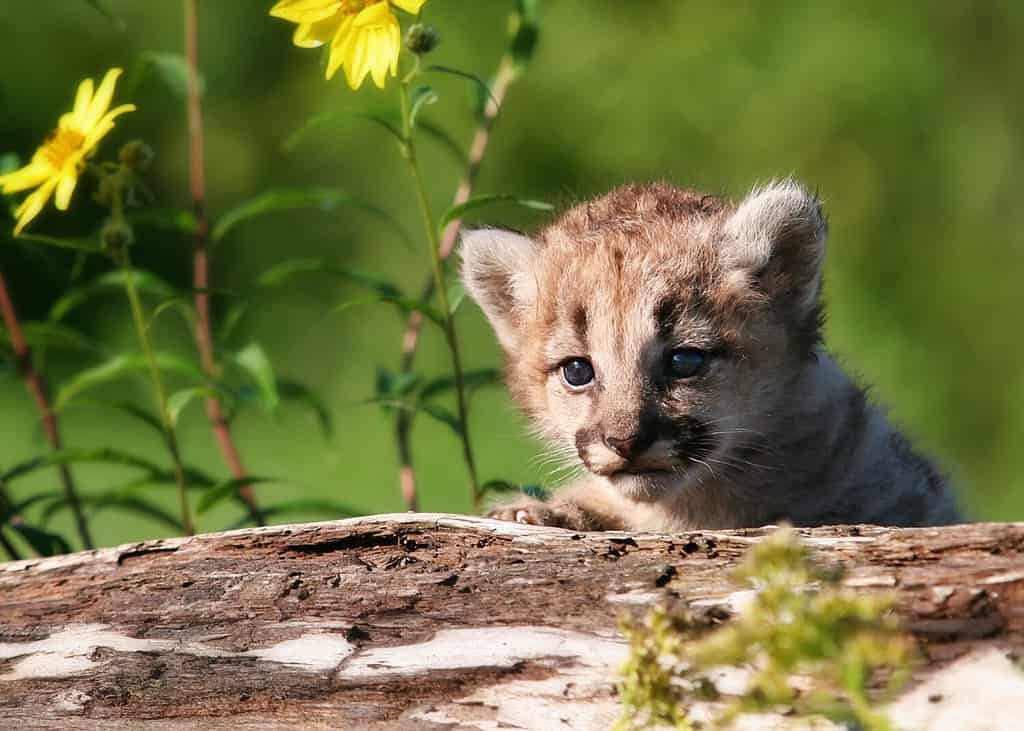
Mountain lions have over 40 different names in the English language.
©critterbiz/Shutterstock.com
Depending on where they are found, humans refer to baby mountain lion cubs by a host of different names. You may hear them called American lions, swamp screamers, mountain ghosts, painters, red lions, Mexican lions, or mountain cats, for example. However, their most common names are mountain lion, cougar, panther, catamount, and puma.
When Spanish explorers first saw these animals in the Americas, they called them gatos montes or “cats of the mountain”. Many people in Latin America and parts of Europe and the United States still refer to them as “mountain lions”. The name “cougar” originated from indigenous South American terms like çuçuarana, cuguacuarana, and cuguar. “Catamount” is a shortened version of “cat-o’-mountain”, a term used to refer to many different wild cats. “Puma” comes from the Quechua language of Peru and means “powerful animal”. “Panther” is sometimes used as well, a term that refers to wild cats with a solid-colored coat.
2. Baby Mountain Lion Cubs Are Threatened with Extinction
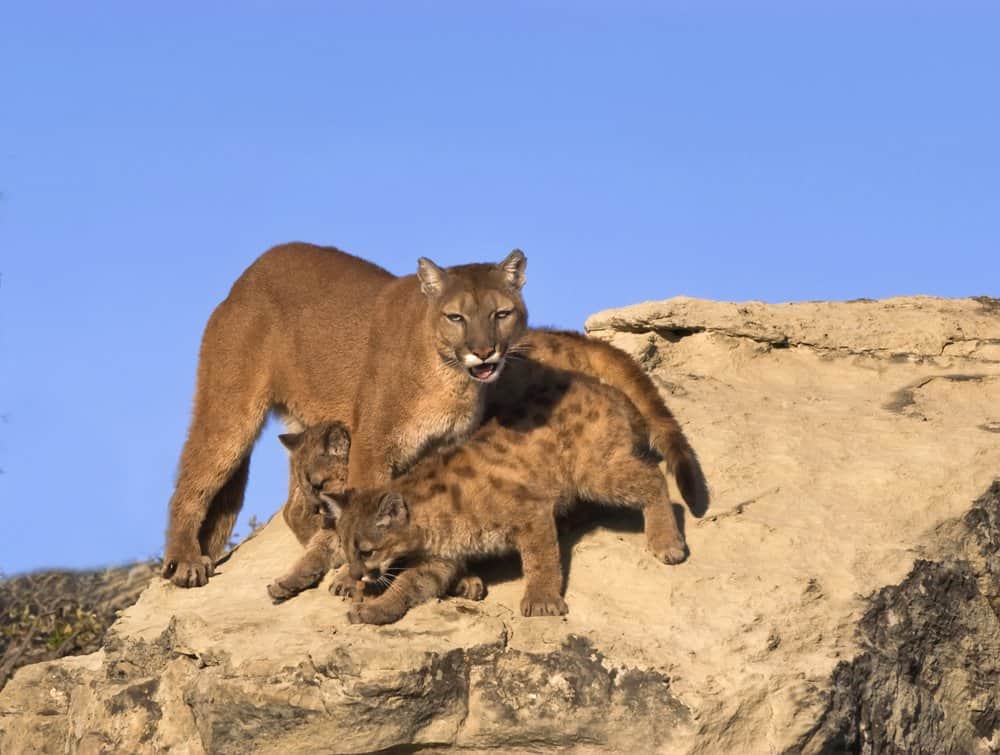
Life is very dangerous for mountain lion cubs, and usually just one kitty from each litter survives.
©outdoorsman/Shutterstock.com
Historically, baby mountain lion cubs lived all throughout both North and South America, with several subspecies found in different regions. However, settlers in the nineteenth and early twentieth centuries worried that these wild cats would attack their farm animals and livestock. They aggressively hunted mountain lions until they had nearly disappeared completely from many areas, particularly in the eastern United States.
Today, mountain lions are listed as Threatened Species. While conservation efforts have helped stabilize some of their populations, these incredible creatures are still in danger due to habitat destruction and fragmentation, unsustainable hunting, lack of prey, and conflicts with livestock. In addition, many mountain lion subspecies are endangered and critically imperiled, such as the Florida panther. Tragically, there are less than 160 Florida panthers left in the wild!
3. Baby Mountain Lion Cubs Are Spotted and Have Beautiful, Bright Blue Eyes
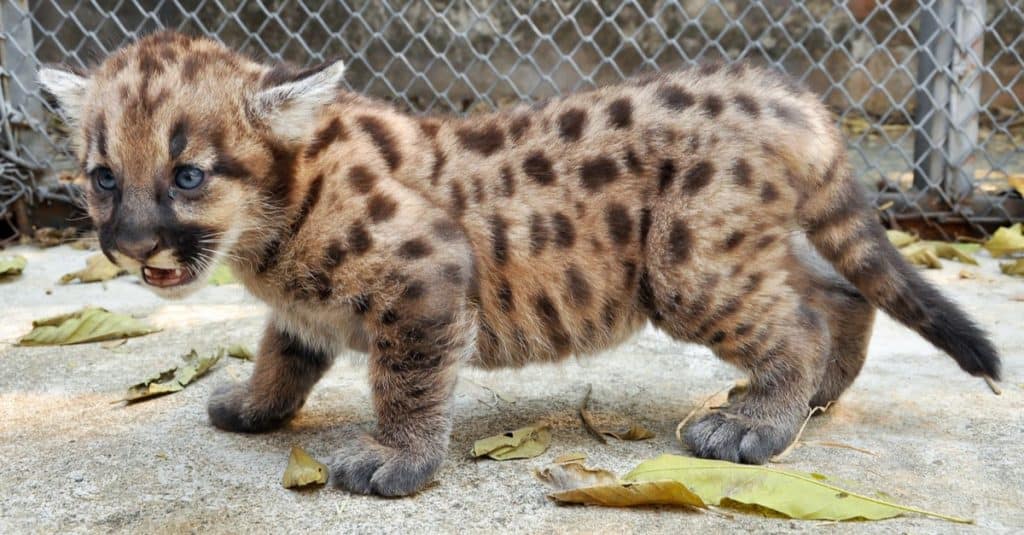
When they are around six months old, baby mountain lion cubs begin losing their spots.
©J.NATAYO/Shutterstock.com
As adults, mountain lions sport a solid-colored coat with tawny, silvery-grey, or a dark reddish-brown fur. In fact, their scientific species name, “concolor”, literally means “of uniform color”. Baby mountain lion cubs, however, look very different from adult cats. For example, baby mountain lion cubs have beautiful, bright blue eyes!
When they are born, baby mountain lion cubs also have lots of dark spots covering their bodies. In addition, they have dark markings on their face, dark rings on their tails, and dark stripes on their legs. Baby mountain lion cubs, in other words, look a lot like miniature leopards! These unique markings help provide camouflage and keep them hidden from potential predators.
4. Baby Mountain Lion Cubs Have Amazing Moms
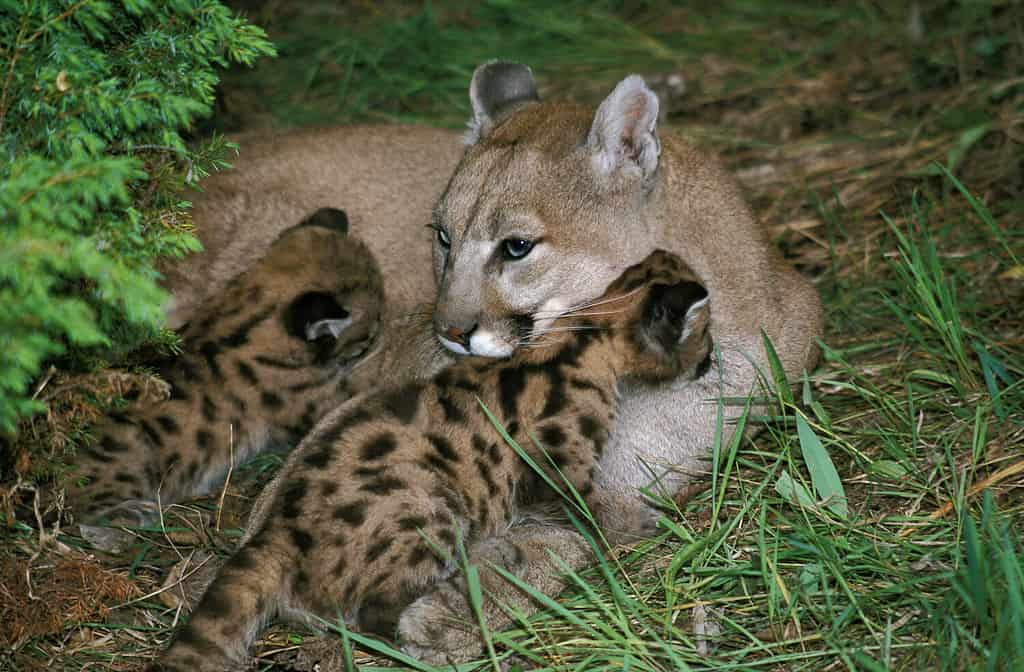
Baby mountain lion cubs learn everything about how to survive in the wild from their mothers.
©slowmotiongli/Shutterstock.com
Although they usually give birth to two to three cubs at a time, female mountain lions can have up to six babies in a single litter. Their tiny cubs are born blind and only weigh around seven to 16 ounces. For much of their early life, these adorable mountain lion cubs are completely dependent on their mother for protection and nourishment.
When they are around two weeks old, mountain lion cubs open their eyes, and at around three months, they start to eat solid food. When they are six months old, baby mountain lion cubs learn to hunt and catch small prey for themselves. However, they do not leave their mother until they are two years old. Until then, they play together and learn essential survival skills from their mother.
5. Baby Mountain Lion Cubs Can’t Roar
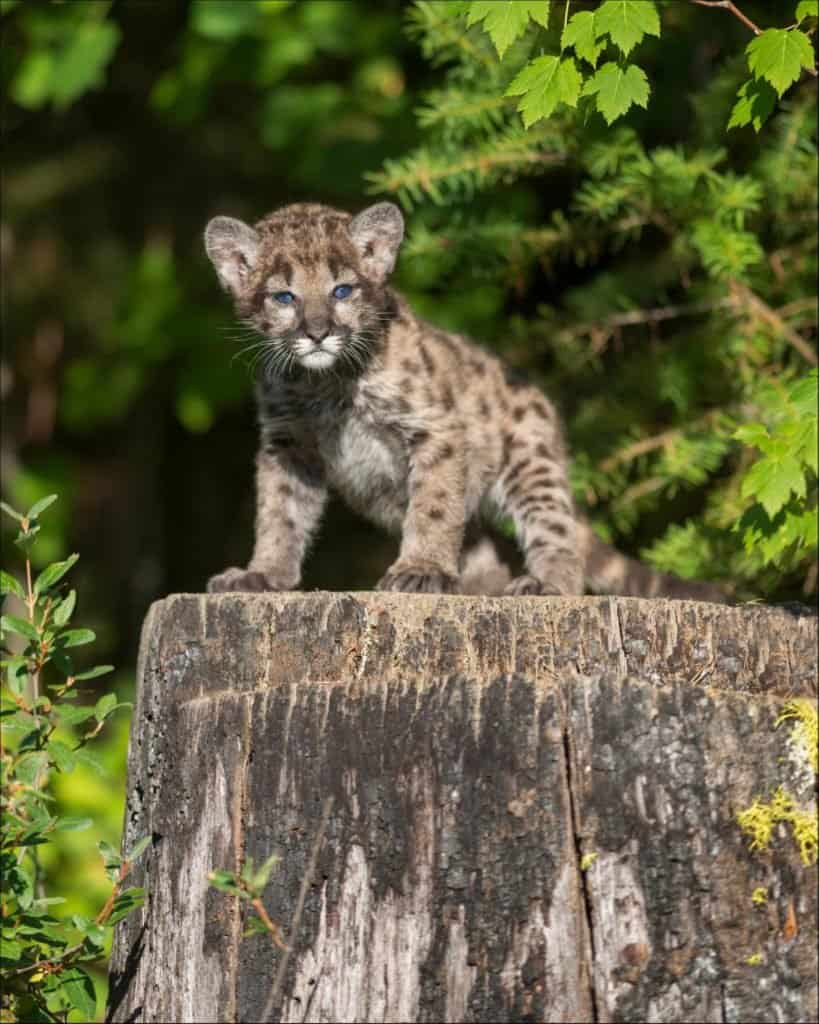
Mountain lions are the fifth largest cat in the world.
©Nagel Photography/Shutterstock.com
Unlike many other big cats, mountain lions do not have the vocal structures of other cats, so they can’t actually roar! However, that doesn’t mean they are quiet — in fact, baby mountain lion cubs are extremely vocal. When they are with their mother and siblings, for example, baby mountain lion cubs often use soft chirps, mews, and whistling sounds to communicate. They also hiss, snarl, and growl when they feel scared or threatened, and even purr when they are content.
The photo featured at the top of this post is © critterbiz/Shutterstock.com
Thank you for reading! Have some feedback for us? Contact the AZ Animals editorial team.




